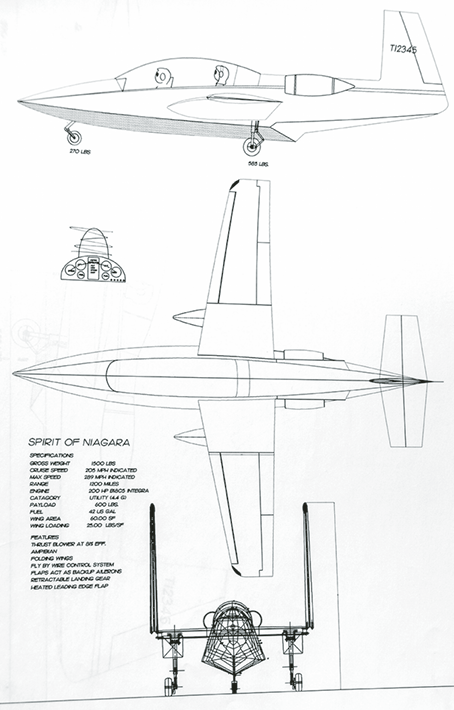Unfinished home-built plane available
As an elementary school kid in the 1960s, I was preoccupied with model airplanes, and an improbable infatuation that someday, I would take to the skies in my own winged craft, soaring towards the heavens as sun glistened off the plexiglass canopy, the snarling drone of the propeller filling the cockpit with joyous noise.
The cost of a commercially built Cessna or Piper seemed prohibitive, so I scanned the pages of Popular Mechanics for advertisements of so-called kit planes, or home-builds. Wood, fibreglass, and metal could be shaped and fastened, bolted to a Volkswagen Beetle power plant, fitted with wheels or floats, and strengthened with high-tensile cables to create a custom flying machine, capable of sweeping me skyward, along with one daring passenger who shared my enthusiasm for adventure. All at a price that wouldn’t break the bank.
As fate would have it, my dreams of blissful flight never materialized. But one is never too old to fantasize, so when I received a call describing a home-built plane in Fonthill that needed a new home, I was quick to scamper over to Cynthia Court to meet with Beverley Parker, who was eager to have the fledgling bird moved from her garage.
At this point, I should mention that the aircraft is, shall we say, incomplete. Unassembled. Less than 20 percent built, by my estimation. The slender fuselage rests as a skeleton on the garage floor, beside the 200 horsepower, four-cylinder Honda Integra engine that was meant to power it. Rolls of sheet aluminum are strewn here and there, along with boxes of rivets — thousands of them — that will need to be stamped into the airframe, affixing the metal skin to the trusses that add structural stiffness.
I saw no wing assemblies, but Beverley assured me that they were safely stowed in the basement.
The plane belonged to Beverley’s late husband, Harry Menian, who died of leukemia in March, age 72. Harry was an engineer with a creative, entrepreneurial streak. He designed, built, and sold Tigershark sports boats out of an industrial plaza on Highway 20 years ago, through a company called Pace Marine. He was also Vice President of Operations at Fleet Aerospace, which was once headquartered in Ft. Erie, and flew a prop-driven, single engine Mooney light aircraft of his own.
“The Mooney was a fast plane,” said Beverley. “Harry used to refer to it as his sports car. He’d fly it to Chicago on business, and I would drive over to the airport in Buffalo to pick him up.”
Harry had drawn up plans to construct a home-built plane of his own design, classified as an experimental aircraft, and set to work in his garage. He called it “Spirit of Niagara,” and intended to make it unique from other monoplanes.

To start with, the design called for folding wings, reminiscent of the Chance-Vought F4U Corsair fighter aircraft of World War II fame. The plane would have retractable, not fixed, landing gear, and a heads-up display, or HUD, which projects instrument readings onto the cockpit windshield. The Honda engine would power a thrust blower rather than a propeller, a type of jet propulsion system. The plane would also be amphibious, capable of water landings.
With an estimated top speed of 289 miles per hour, the 1500- pound craft would cruise at 205 mph, and have a 1200 mile range. It would have tandem seating for two, with the pilot in front, and the passenger tightly packed behind in the tapered fuselage.
Surveying the bare bones of the craft in the garage, Beverley pointed to hundreds of rivet holes in the frame, awaiting fasteners.
“Harry hand-drilled every single one himself,” she said. “He even made his own tools sometimes. He was an engineer, and that’s what he loved to do. His first university degree was actually in naval architecture, and Harry designed yachts and icebreakers, and other ships. The Tigershark boats were hand-built by Harry in fiberglass. He sold six of them, but then the economy tanked in the late 1980s, and sales went stagnant.”
Waste management was another field that Harry delved in for a while.
“He didn't particularly like that kind of work, but it could be very lucrative,” she said.
Horseback riding was another of Harry’s interests, said Beverley.
“He was a doer. He loved keeping busy,” she said.
The couple moved to Fonthill in 1985. Their kids are grown and relocated to Long Branch (Toronto) and Sturgeon Falls.
Beverley said that Harry designed the amphibious airplane with intentions of flying it to their cottage in North Bay.
“He didn't like driving north, and getting stuck in traffic on Highway 400,” she said.
If you have read this far, it’s possible you are interested in making this flying dream your own, right? So the next question you’re thinking is, how much?
I'm not sure what it’s worth,” said Beverley. “I haven’t had it appraised. I'm just trying to find it a good home, with someone who will appreciate it, like Harry did.”
Send your inquiries to [email protected] ◆


